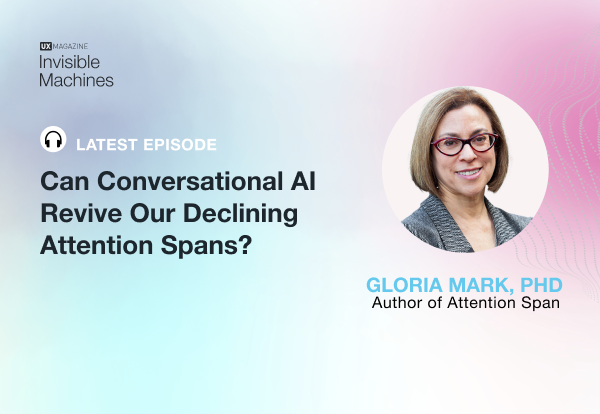According to the Statistic Brain Research Institute, in 2015, the attention span of humans averaged 8.25 seconds, down from 12 seconds in 2000.
For website designers, this study is significant, in the sense that eight seconds is all you initially have to make site visitors understand your value proposition and convince them to stay on your site. More than that, and the chances of them being distracted skyrockets.
So how do you make your website compelling enough to make them not want to leave?
This article lists six principles to remember when designing your website.
-
Unique value proposition (UVP)
In the content-saturated world of the Internet, every opportunity spawns the need to differentiate oneself. Creating a great first impression is key, but making the customer realize that what you offer merits their full attention is equally important.
A value proposition, according to conversion expert Peep Laja, is the primary thing that determines whether users leave or stay on your site. It’s a statement that clearly explains how your product or service solves their pain points, its specific benefits, and why they should buy from you instead of your competitors.
Some things to bear in mind when communicating your UVP:
-
Location
Eye tracking research shows that above-the-fold elements attract the most attention. Eyetrack III studies also found that the upper left of the page is where the eyes often fixate first before going left to right, then further down the page.
While these studies justify why website designers insist on positioning the site’s most important elements above the fold, there is absolutely no reason to cram everything you deem necessary on just this part of the page. You don’t want the top half of your website looking chaotic, or the overall usability of the page undermined.
Users’ attention is more difficult to capture now than it used to, mainly because of the sheer amount of content available on the Internet for them to peruse. That said, the items you include above the fold must communicate a clear and well-defined value proposition, as opposed to cramming what youthink is important down users’ throats by littering the area with too many elements. Give them one tidbit of information to digest one at a time, and if they think this information is worth researching more about, they will stay on your page to find out more.
After all, according to the Nielsen Norman Group, “users do scroll, but only if what’s above the fold is promising enough.”
-
Visual illustration
Harnessing the power of visual information is a primary ingredient in connecting with your audience. This is anchored to the fact that our brain processes visuals 60,000 times faster than plain text.
Add short attention spans into the mix, and the “show, don’t tell” argument becomes all the more compelling. Provide users with visuals like images, graphs, infographics, screenshots and video clips instead of big blocks of text. These allow them to process your message more quickly and retain more valuable information.
One thing to keep in mind:
Although effective, adding visuals to your website comes with a caveat: they must support your value proposition and the audience’s perceived expectations. Otherwise, it may call into question your site’s integrity.
-
Unique content
As more and more content becomes available online, marketers find it increasingly difficult for their brands to connect. In fact, according to eMarketer, 41% of marketers struggle to come up with conversion-worthy content.
A tip from Oli Gardner, founder of Unbounce, is to speak with your customers and ask them to craft the headline for you. He says that by communicating with them, you may unearth new information on why they choose you and what they like about your business.
Implementing this strategy also allows you to get to know your site users better and craft targeted content that speaks to their sensibilities and address their pain points.
And then, there’s the so-called 10X content, content that, as its name suggests, is 10 times better than what the search engines provide for a certain keyword. If you create content that answers everything a user can possibly ask about a topic, you’re shortening their research time, ultimately creating a positive experience for them.
Among the characteristics of 10X content is the melding of aesthetics and utility, as well as providing great visuals while solving your customers’ problems.
-
White space
A cluttered website is hard on the eyes and confuses the brain. However, adding white space between paragraphs and in the margins has proven to increase comprehension by 20%.
While the layout of a webpage, including white space, may not measurably influence performance, it does influence user satisfaction and experience. Different web design elements affect the moods of users. Positive or negative is entirely up to you.
The creative director of Wonder Shuttle, Herbert Lui, regards white space as essential for lead generation. He says that white space minimizes confusion and the effort required on the reader’s end, helping them navigate the website easily.
-
Call to action (CTA)
Call-to-action buttons should go beyond being attractive and fitting the overall design of the website. After all, their main purpose is to get your visitors to do something, such as download an ebook, sign up for a free trial, subscribe to a newsletter, and so on.
You don’t have to put CTAs above the fold. Oli Gardner suggests placing them in the middle or bottom of the page to avoid being aggressive with visitors. Other suggestions include using action-packed words, like “try” or “download,” and the first-person speech to increase conversions.
Clarity of CTAs is also extremely important. Their message should explicitly convey what the visitor could expect to accomplish. If users fail to get what you mean, they’ll leave.
-
Broken links
Imagine going to a retailer location that came highly recommended by a trusted friend, only to find it closed for some reason you can’t fathom. How would you feel?
Disappointed, naturally. Your friend might even hear a thing or two from you the next time you get together.
Similarly, when users come to your site because of a link pointing back to your content and they end up not getting the page they expect, two things happen:
- Their regard for the webpage linking back to your content diminishes.
- Their perception of your site, particularly if they’re first-time visitors, goes from promising to outright unfavorable in a matter of seconds.
While not necessarily web design elements, broken links are worth mentioning because they make for a bad user experience.
Having broken links in your site is unforgivable since they’re easily fixable by:
Creating a 404 error page
A custom 404 error page lets you keep site visitors and help them find what they’re looking for. While the page basically tells your visitors that the page they’re looking for cannot be found, you can customize it to include links to the most visited posts in your site, or a link to redirect them to the home page.
Implementing 301 redirects
A 301 redirect tells your users that either a page or an entire website has permanently moved. Implementing one ensures that site visitors are directed to the correct page or site.
-
Pages that take time to load
According to the Nielsen Norman Group, a website’s loading speed has such a huge impact on brand impressions that it can become one of the characteristics a customer associates with a site.
Furthermore, in a Crazy Egg article, an Akamai study is quoted to have found that 40% of users will simply abandon a page if loading time takes more than three seconds.
Again, this all stems from shorter attention spans and the overflowing amount of available content online.
People on the Internet want instantaneous response times. So, if you’re like most users, you’d rather tap the Back button than wait for a webpage to load after what you deem is a long enough time.
Slow load times are often caused by:
- Image files that are too big
- Too many bells and whistles, such as fancy Flash
- Embedded media from external sources
- Code that’s too bulky
The same Crazy Egg post above offers useful tips on how to meet your customers’ need for speed. Suggestions include minimizing HTTP requests, optimizing images, enabling compression and browser caching, and optimizing CSS delivery, among others.
-
Testing
Experimenting with different website design options lets you gauge your site’s overall usability. This method, called A/B testing or split testing, allows you to gain insight into your visitors’ behavior, helping you pinpoint which design resonates best with them.
You can test any variable in the website, but there are some elements that could have the most impact when modified. These include landing page images, wording and placement of CTAs, headlines, and the amount of text on a page.
While A/B testing is generally an analytics tool that helps businesses maximize the conversion performance of a website, when used properly, it can positively impact user experience.
According to Graham Horner, CMO at Scott Dunn, using A/B testing made their data richer and helped them implement a data-driven philosophy that enabled them to provide personalized services to their customers and increase engagement.
Final word
If there’s one thing to take away from this article, it should be this:
When designing a website, put yourself in the user’s shoes. What you find ineffective in a website is something users will likely find ineffective themselves.
A sound understanding of the psychology of web design is a win-win all around—customers find value in what you offer, and you ultimately get the results you need.







